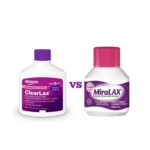How Much Miralax Can I Take For Severe Constipation?

Constipation is a symptom rather than a disease, generally defined as when bowel movements occur three or fewer times a week and are difficult to pass. It is one of the most common digestive complaints in the United States in ambulatory centers and a common cause of referral to gastroenterologists and colorectal surgeons. Despite its frequency, it often remains unrecognized until the patient develops sequelae, such as anorectal disorders.
According to the Rome IV criteria for constipation, a patient must have experienced at least two of the following symptoms over the preceding 6 months:
• Fewer than three spontaneous bowel movements per week
• Straining for more than 25% of defecation attempts
• Lumpy or hard stools for at least 25% of defecation attempts
• Sensation of anorectal obstruction or blockage for at least 25% of defecation attempts
• Sensation of incomplete defecation for at least 25% of defecation attempts
• Manual maneuvering is required to defecate for at least 25% of defecation attempts
In addition, the patient must rarely have loose stools present without the use of a laxative and must not meet Rome IV criteria for irritable bowel syndrome (IBS). Chronic constipation is infrequent bowel movements or difficult passage of stools that persists for several weeks or longer.
What is MiraLAX?
MiraLAX is an over-the-counter osmotic laxative containing Polyethylene Glycol 3350 also known as PEG 3350. It is used to treat constipation. MiraLAX comes as a flavorless powder that you mix with four to eight ounces of water, juice, or other liquid. The powder comes in bottles or single-serve packets. It’s typically used for short-term treatment, but in some cases, it’s used long-term to treat chronic (long-lasting) constipation. MiraLAX is also sometimes used for colonoscopy bowel preparation.
Generally, taking MiraLAX will cause a bowel movement within one to three days of taking it. One study of its effectiveness focused on people who had fewer than two bowel movements per week. MiraLAX increased their number of bowel movements to 4.5 per week, compared to 2.7 per week in people taking a placebo. Another study found that 52 percent of people with chronic constipation were successfully treated with MiraLAX.
How Much MiraLAX Can I Take For Severe Constipation?
The standard dosage of MiraLAX whether for mild or severe constipation for people age 17 and older is 17 grams (1 packet or 1 capful). The packet or capful of medication is mixed in 4 to 8 fl oz of a beverage and then you drink it once a day.
To use MiraLAX powder, measure your dose with the medicine cap on the bottle. This cap should contain dose marks on the inside of it. Pour the powder into 4 to 8 ounces of a cold or hot beverage such as water, juice, soda, coffee, or tea. Stir this mixture and drink it right away. Do not save for later use.
MiraLAX should produce a bowel movement within 1 to 3 days of using the medication. Polyethylene glycol 3350 normally causes loose or even watery stools.
Anyone under the age of 17 should talk to a healthcare provider before taking this medication.
However, if MiraLAX fails to produce a bowel movement within 3 days, talk with your doctor, he or she may recommend some MiraLAX alternatives. Some people who have chronic constipation have an imbalance of bacteria in their gut. Consuming more probiotic foods could help improve this balance and prevent constipation.
A 2019 review found that taking probiotics for 2 weeks can help treat constipation, increasing stool frequency and stool consistency. They could also help treat constipation by producing short-chain fatty acids. These may improve gut movements, making it easier to pass stools.
Alternatively, try a probiotic supplement. Some studies have found that people started to feel the benefits of these supplements after 4 weeks.
Try taking probiotic supplements, which are available online, or eating more probiotic-rich foods to see if this helps with constipation. Prebiotic foods include:
• yogurt
• sauerkraut
• kimchi





